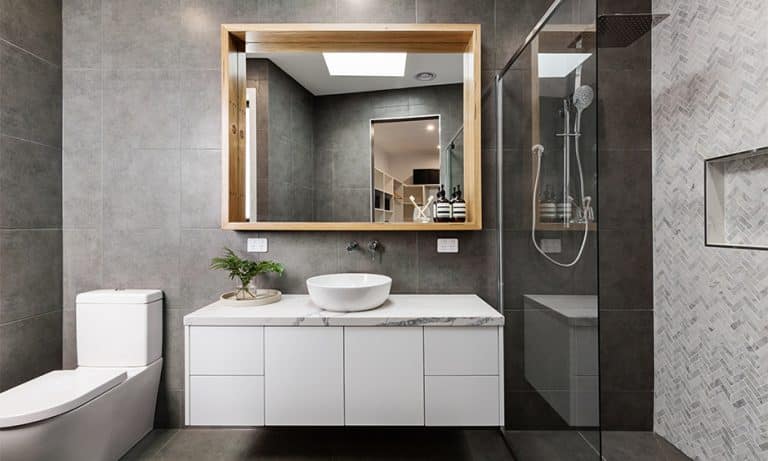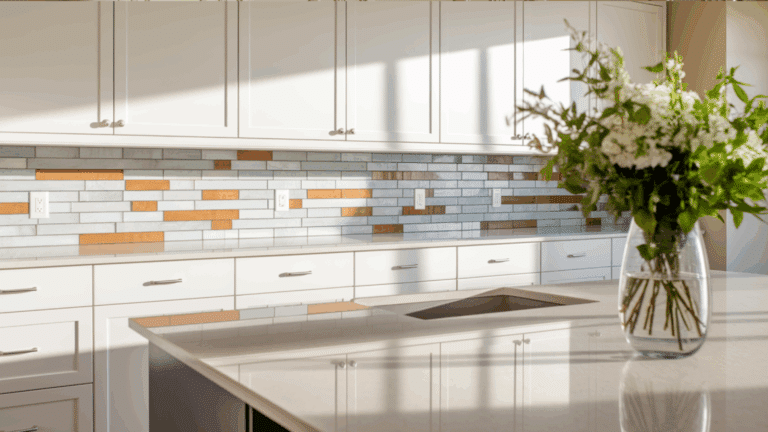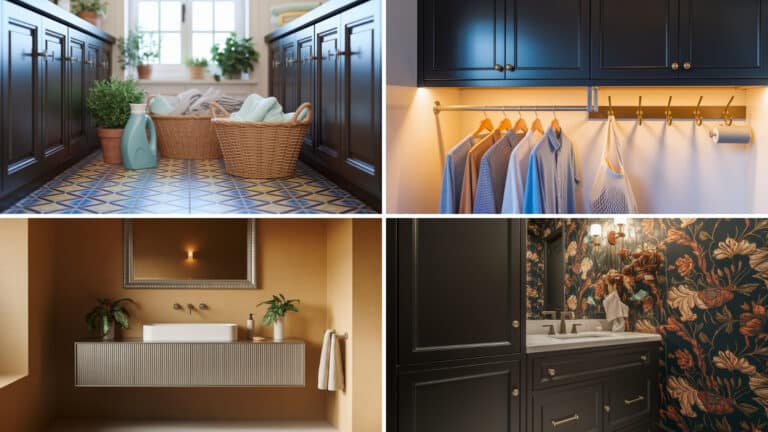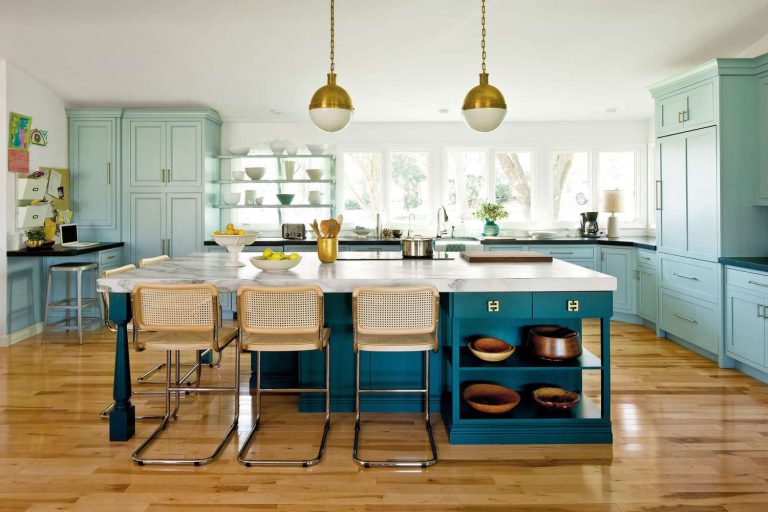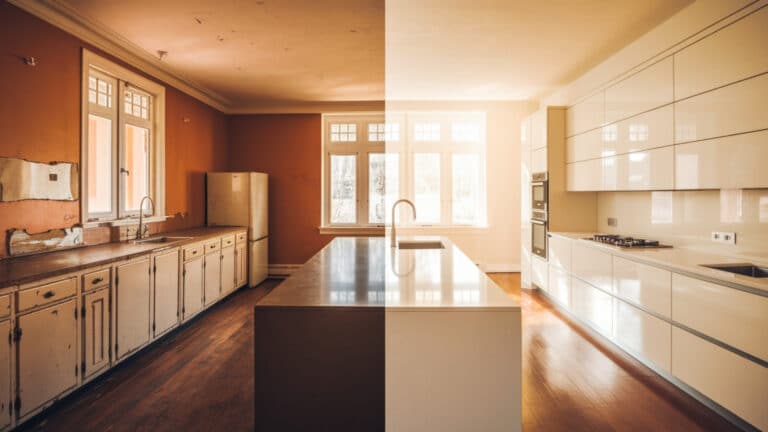Your Guide to Standard Kitchen Cabinet Sizes
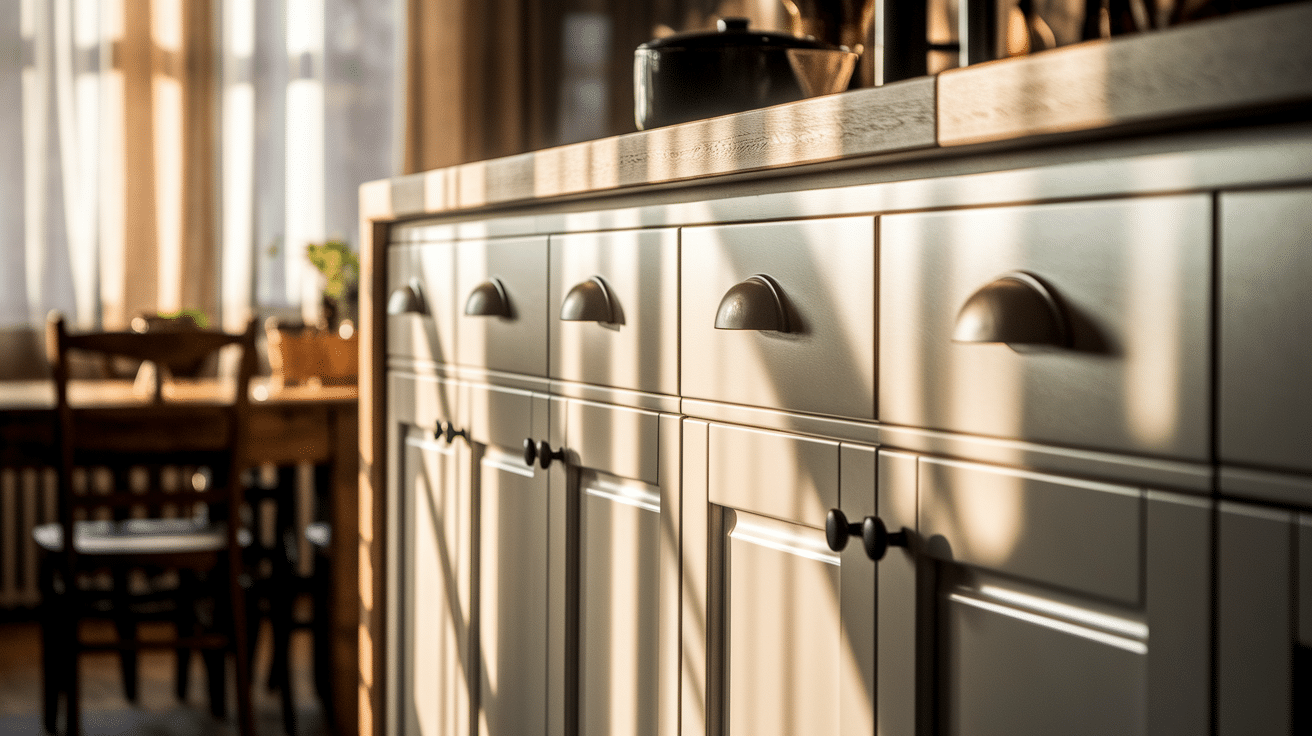
Are you planning to remodel your kitchen or just replace some cabinets? One of the first things you need to know is the standard kitchen cabinet sizes.
But how do you know what sizes are right for your space? Understanding the typical dimensions of base, wall, and tall cabinets can help you make smart choices that fit your kitchen perfectly.
Regardless of whether you are installing new cabinets or upgrading your kitchen design, knowing these standard sizes will make the process easier.
In this guide, we will break down the most common cabinet dimensions to help you plan your kitchen remodel with confidence.
Understanding Kitchen Cabinet Types
Let us quickly understand the main types of kitchen cabinets. Knowing the types will help you plan your kitchen better:
1. Base Cabinets Sizes

Let us take a closer look at the sizes for base cabinets:
-
Height of Base Cabinets: The standard height for most base cabinets is 34.5 inches. This works well for most kitchens.
-
Width of Base Cabinets: Base cabinets typically come in widths of 12, 15, 18, 24, 30, 33, and 36 inches. Your choice depends on your kitchen layout and storage needs.
-
Depth of Base Cabinets: The standard depth is 24 inches, which provides enough space for most kitchen items. Some base cabinets can also be deeper or shallower, depending on your preference.
-
Other Considerations: You may need a deeper or shallower base cabinet depending on appliances or space. Measure carefully! Breakdown helps you choose the right base cabinets for your kitchen.
2. Wall Cabinets Sizes

Here is a breakdown of wall cabinet sizes to help you plan better:
- Height of Wall Cabinets: Most wall cabinets are 30 inches tall, but they can go up to 42 inches for higher ceilings.
- Width of Wall Cabinets: Wall cabinets are commonly available in widths of 12, 15, 18, 24, 30, and 36 inches.
- Depth of Wall Cabinets: The standard depth for wall cabinets is 12 inches, which is enough to store dishes and other kitchen items.
- Other Considerations: If you have taller walls, you can choose taller cabinets. Just make sure they fit well with your counter height.
These wall cabinet sizes should give you plenty of options to fit your kitchen space perfectly.
3. Tall Cabinets Sizes
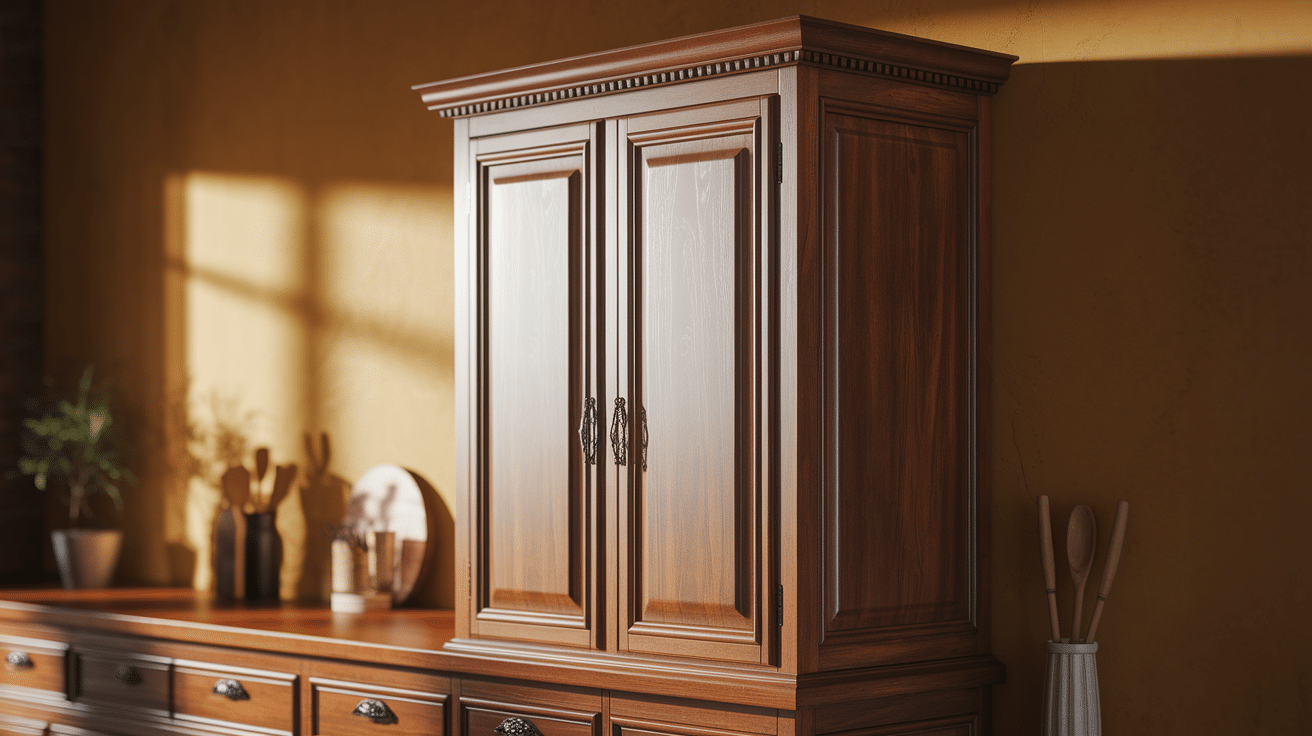
Let us understand the standard sizes for tall cabinets:
- Height of Tall Cabinets: Tall cabinets, like pantry cabinets, are usually 84 inches tall. Some can go up to 96 inches if you have taller ceilings.
- Width of Tall Cabinets: These cabinets are typically 18, 24, 30, or 36 inches wide, depending on how much storage you need.
- Depth of Tall Cabinets: The standard depth is 24 inches, but you can find deeper ones if you need extra space.
- Other Considerations: Tall cabinets are ideal for storing food, cleaning supplies, or brooms. Ensure your kitchen has enough space for them.
These tall cabinet sizes offer great storage options for your kitchen.
4. Custom Cabinets Size
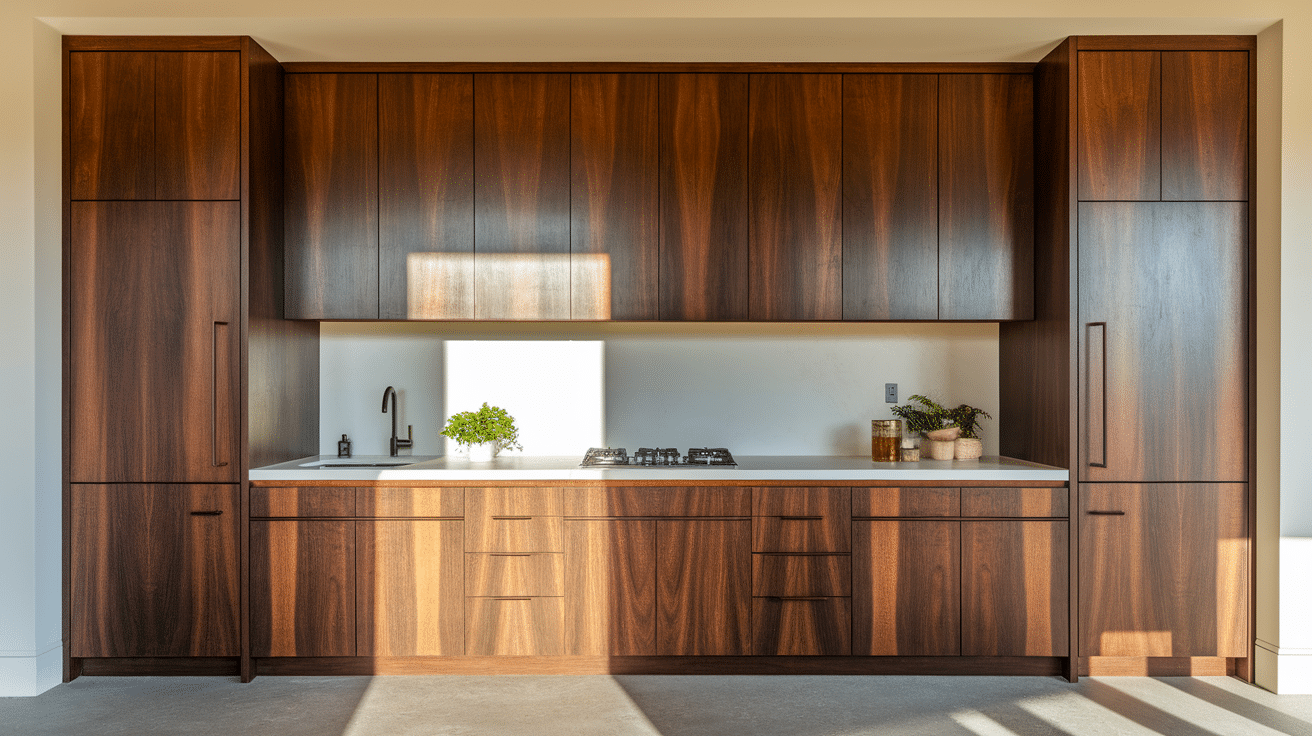
If you need a perfect fit, here is what you should know about custom cabinet sizes:
-
When to Consider Custom Cabinets: If your kitchen has odd shapes or spaces where standard cabinets don’t fit, custom cabinets are the best option. They are ideal for special storage of large items or appliances.
-
Advantages of Custom Cabinets: You can get cabinets that match your kitchen size and needs. Custom cabinets let you add features like pull-out shelves or extra drawers.
-
Cost of Custom Cabinets: Custom cabinets are pricier because they are tailored for your kitchen and can be a worthwhile investment for a perfect fit and added features.
-
Design Flexibility: You can select your preferred design, materials, and style. Custom cabinets allow for unique storage options, such as hidden compartments or built-in organisers.
Custom cabinets are a great way to make your kitchen fit your style and storage needs perfectly.
Measuring for Cabinets
Measuring carefully will help you choose the right cabinet sizes and avoid installation problems later on. Here is how you can measure for cabinets to get the right fit.
-
Measuring Cabinet Height
-
Measure from the floor to the desired height of the cabinet. Standard base cabinets are usually 34.5 inches tall, but you can adjust for your needs.
-
For wall cabinets, measure from the floor to the ceiling or the space above your countertops.
-
-
Measuring Cabinet Width
-
Measure the width of the space where the cabinet will go. Make sure to leave a small gap for easy installation.
-
Standard widths for base and wall cabinets are between 12 and 36 inches.
-
-
Measuring Cabinet Depth
-
For base cabinets, the standard depth is 24 inches. Measure from the wall to where you want the cabinet to end.
-
Wall cabinets typically have a depth of 12 inches, but you can adjust depending on your space.
-
-
Measuring for Special Features
-
If you plan to include extra features like pull-out drawers or lazy Susans, make sure to measure for these too.
-
Double-check measurements around appliances like the fridge or stove to ensure proper fit.
-
Conclusion
Understanding standard cabinet sizes is key to planning a kitchen remodel or installation.
By knowing the typical dimensions for base, wall, and tall cabinets, you can make sure your cabinets fit your kitchen perfectly.
Custom cabinets offer extra flexibility for unique spaces, but they can come at a higher cost.
Taking accurate measurements for height, width, and depth is essential to avoid mistakes during installation.
Going for standard or custom cabinets, having a clear understanding of these sizes will help you create a kitchen that is functional, stylish, and tailored to your needs. Happy remodeling!
Frequently Asked Questions (FAQs)
Can I Use the Same Cabinet Sizes for Every Kitchen?
No, each kitchen is different, so the sizes may need to be adjusted based on your space and needs.
Can I Mix and Match Different Cabinet Sizes?
Yes, you can mix different sizes for base, wall, and tall cabinets to create a functional and stylish layout.
What Do I Do if My Kitchen Walls Are Not Straight?
If your walls aren’t straight, custom cabinets might be a good option to ensure a perfect fit.

